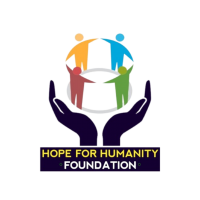Insights ...
EDUCATION FOR THE UNDERPRIVILEGED
Education is a fundamental right that should be accessible to all individuals, regardless of their socioeconomic background. However, in many parts of the world, there exists a significant education gap that hinders the development and potential of children from poor families.
Understanding the Education Gap
The education gap faced by poor children is a complex issue that stems from the unequal distribution of resources and opportunities. It is a problem that affects communities across the globe, where children from low-income families often find themselves in underfunded schools with limited facilities and outdated curricula.
These schools, lacking the necessary resources, deprive students of the same learning experiences and opportunities as their wealthier counterparts. The lack of access to quality education further perpetuates the cycle of poverty and limits the chances of upward social mobility for these children.
The Disparity in Educational Access for the Poor
When examining the education gap, it becomes evident that various factors contribute to the disparity in educational access for the poor. Inadequate resources are a significant challenge faced by low-income communities. These schools struggle to provide essential learning materials, technology, and extracurricular activities that are crucial for a well-rounded education.
Barriers such as lack of transportation and the distance to schools pose additional challenges for children from low-income families. Many students have to travel long distances to reach their schools, making it difficult for them to attend regularly. Additionally, the need for children to contribute to family income often forces them to prioritize work over education, further hindering their access to quality schooling.
By : GGI Insights.
Rural vs Urban Education disparities.
While the education gap is prevalent in both rural and urban areas, the challenges faced by rural communities can be even more pronounced. In rural areas, limited school options and a lack of qualified teachers pose significant obstacles for children seeking quality education.
Inadequate infrastructure, such as outdated facilities and a lack of access to technology, further compounds the challenges faced by students in rural communities. The geographical isolation of these areas often makes it difficult for students to access additional educational resources and extracurricular activities that are readily available in urban areas.
Bridging the education gap in rural communities requires targeted efforts and innovative solutions that address the unique needs of these students. It is essential to invest in improving school infrastructure, recruiting and retaining qualified teachers, and providing equal access to technology and educational resources.
The education gap faced by poor children is a multifaceted issue that requires comprehensive solutions. By addressing the unequal distribution of resources, removing barriers to education, and providing targeted support to low-income communities, we can work towards narrowing the gap and ensuring that every child has an equal opportunity to succeed academically and break the cycle of poverty.
By : GGI Insights.
Strategies for enhancing education for the poor.
Education is a powerful tool that can break the cycle of poverty and empower individuals to create a better future for themselves and their communities. However, access to quality education remains a challenge for many impoverished areas. To bridge the education gap, it is essential to develop and implement effective school programs in these areas.
These programs should go beyond traditional academic subjects and focus on holistic development and support services. One crucial aspect is providing nutritious meals to students. Many children in poverty-stricken areas suffer from malnutrition, which can hinder their cognitive development and ability to learn. By offering healthy meals at school, we can ensure that students have the energy and nutrients they need to thrive academically.
In addition to nutrition, health services are also vital for the well-being of disadvantaged students. Many children in impoverished areas lack access to proper healthcare, which can negatively impact their ability to attend school regularly. By providing on-site health services, such as regular check-ups, vaccinations, and access to healthcare professionals, we can address these barriers and improve the overall health and attendance of students.
Mental health support is another crucial component of effective school programs in impoverished areas. Many students in these communities face various challenges, such as violence, trauma, and unstable home environments. By offering counseling services, we can provide them with a safe space to express their emotions, cope with their experiences, and develop resilience. This support can significantly enhance their well-being and learning outcomes.
By : GGI Insights.




